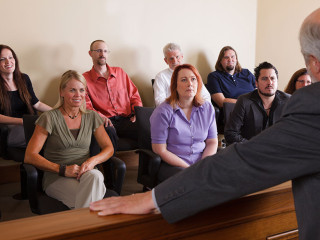Released September 3, 2015 | Full Decision
Judge orders summary judgment motion to proceed with viva voce evidence
This was a personal injury claim arising from a car accident. The plaintiff suffered catastrophic injuries. He claimed that an unidentified vehicle caused the accident and fled the scene. He then sued his own insurance company for unidentified motorist coverage. The insurer announced its intention to bring a summary judgment motion alleging that there was no evidence that an unidentified vehicle was involved in the crash.
The matter came before Justice F.L. Myers in Civil Practice Court. The insurer was seeking a standard summary judgment motion without any oral evidence. Each party was expecting to rely on an expert opinion on the issue of whether or not an unidentified vehicle was involved. Rather than schedule the motion, Justice Myers scheduled a case conference pursuant to Rule 1.05. In that case conference he tried to determine whether oral evidence of the plaintiff and experts was required as part of the summary judgment motion. The plaintiff argued that if oral evidence was to be heard then he should be entitled to a full jury trial and that the case would therefore not be appropriate for summary judgment.
Justice Myers reviewed the law in this area. He held that a summary judgment motion is not the same thing as bifurcating liability and damages. Instead, he would be scheduling a motion at which a judge will decide if a summary disposition of the issue of liability is appropriate, fair, and just. If there is no liability, then the action will be over and there will be no trial at all. If liability is found summarily, then the case will go to trial on damages. If the judge is not prepared to resolve the matter summarily, then she will decide how to deal with the issues under Rule 20.05.
Justice Myers noted that there is no “right” to a trial in civil matters: Parties’ entitlements to a trial or to a jury trial are subject to the terms of the statutes and rules under which these processes are created and governed. Hryniak v. Mauldin, 2014 SCC 7 determined that under Rule 20, where a judge is satisfied that it is in the interests of justice to proceed summarily for all or part of an action, proceeding in that manner better fulfills the goals of the civil justice system than does a slower and more expensive trial.
Justice Myers held that where a summary judgment motion can be done fairly, it is a more expeditious, more affordable, more proportionate process and provides a quicker, cheaper, and more satisfactory outcome for all of the parties. He also held that summary judgment is certainly a process that fosters the goals of the civil justice system and one that may once again make lawsuits affordable for the majority of Canadians for whom court-based civil justice is currently beyond reach.
Justice Myers then ordered that the summary judgment motion would proceed for a maximum of 3 days. The parties were to exchange expert reports by way of affidavit in advance of the motion. The plaintiff would give evidence in chief for a maximum of 1 hour and undergo cross-examination for a maximum of 3 hours. The parties experts would then give their evidence in chief by way of affidavit and be cross examined for no more than three hours per expert.












